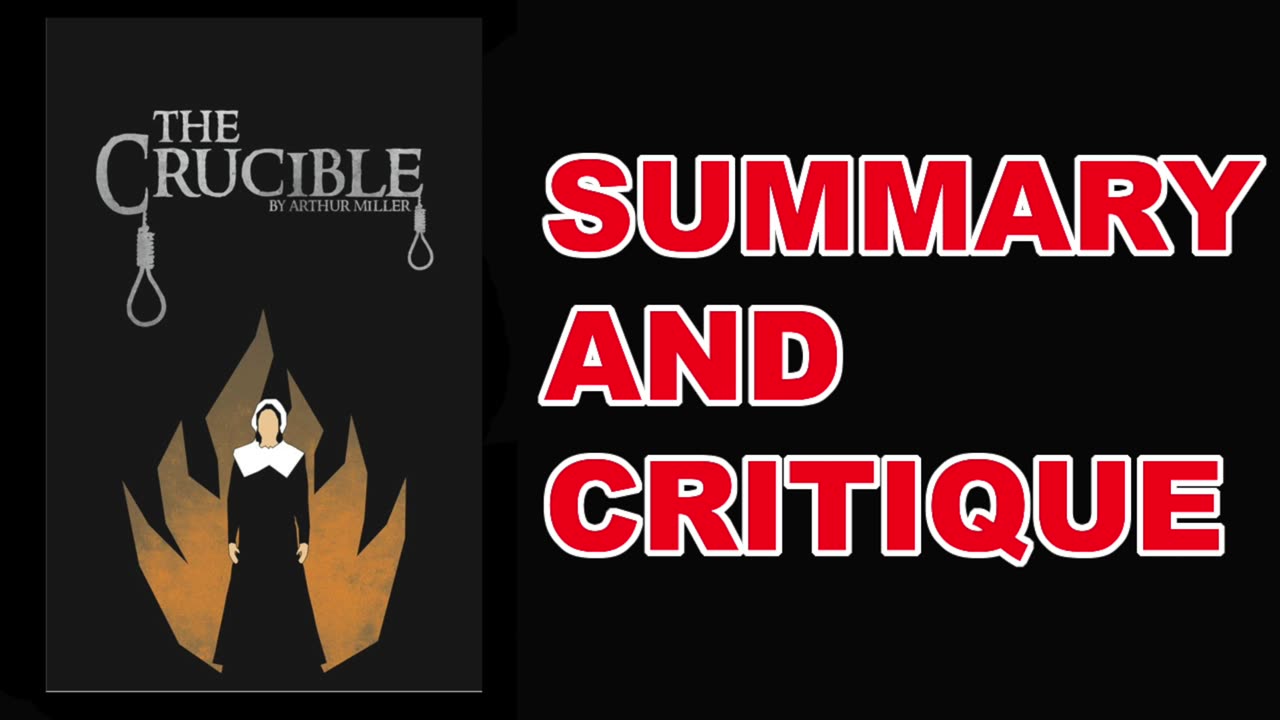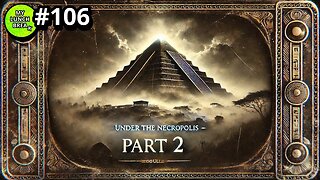Premium Only Content

The Crucible by Arthur Miller | Summary and Critique
Buy Here: https://amzn.to/4iSoRT7
"""The Crucible"" is a play written by Arthur Miller and first performed in 1953. The play is set in Salem, Massachusetts, in the year 1692, during the height of the Salem witch trials. It explores themes of hysteria, intolerance, and the abuse of power.
The play is based on historical events and tells the story of a group of young girls who accuse innocent people of witchcraft. The accusations lead to a series of trials and executions, with many innocent people being put to death. The play's protagonist is John Proctor, a farmer who becomes embroiled in the trials after his wife is accused of witchcraft.
One of the main themes of the play is the danger of hysteria and the importance of reason and justice. The play shows how easily a community can be swayed by rumors and fear, leading to innocent people being falsely accused and convicted. Miller uses the witch trials as a metaphor for the McCarthy era of the 1950s, when many people were falsely accused of being communists and faced persecution and blacklisting.
Another theme of the play is the abuse of power. The characters in the play who hold positions of authority, such as the judges and the town officials, use their power to manipulate and control the community. Miller portrays the leaders of the community as corrupt and hypocritical, with their actions driven more by personal ambition than by a commitment to justice and truth.
Overall, ""The Crucible"" is a powerful and timeless critique of the dangers of mob mentality, intolerance, and the abuse of power. While some critics have accused the play of being heavy-handed in its message, it remains a classic work of American drama that continues to be widely performed and studied.
-
 25:08
25:08
MYLUNCHBREAK CHANNEL PAGE
1 day agoUnder The Necropolis - Pt 2
233K60 -
 1:45:59
1:45:59
Spittin' Chiclets
1 day agoCanadian Chokejob - Game Notes Live From Chicago - 12.28.2024
229K31 -
 9:18
9:18
Space Ice
21 hours agoThe Guyver - Alien Bug Suits, Exploding Dragons, & Mark Hamill - Weirdest Movie Ever
136K25 -
 12:46
12:46
RealReaper
2 days ago $8.26 earnedMufasa is a Soulless Cash Grab
84.1K9 -
 5:14:24
5:14:24
FusedAegisTV
22 hours agoWelcome to The King of Iron Fist Tournament! \\ TEKKEN 8 Stream #1
146K3 -
 DVR
DVR
Bannons War Room
1 year agoWarRoom Live
101M -
 5:42:36
5:42:36
FreshandFit
1 day agoLive X Censorship For Opposing Immigration?!
256K123 -
 1:08:16
1:08:16
Tactical Advisor
23 hours agoNEW Budget Glocks | Vault Room Live Stream 011
135K9 -
 16:30
16:30
SNEAKO
1 day agoNO FRIENDS IN THE INDUSTRY.
169K72 -
 6:19
6:19
BlackDiamondGunsandGear
1 day agoHow Fat Guys can Appendix Carry
119K14